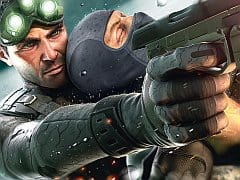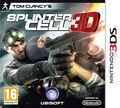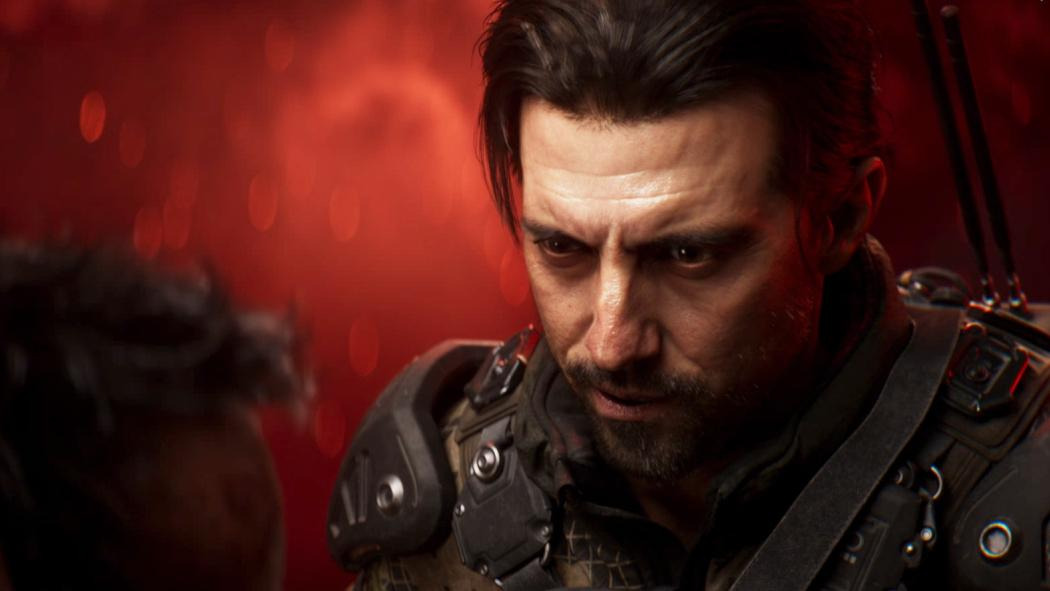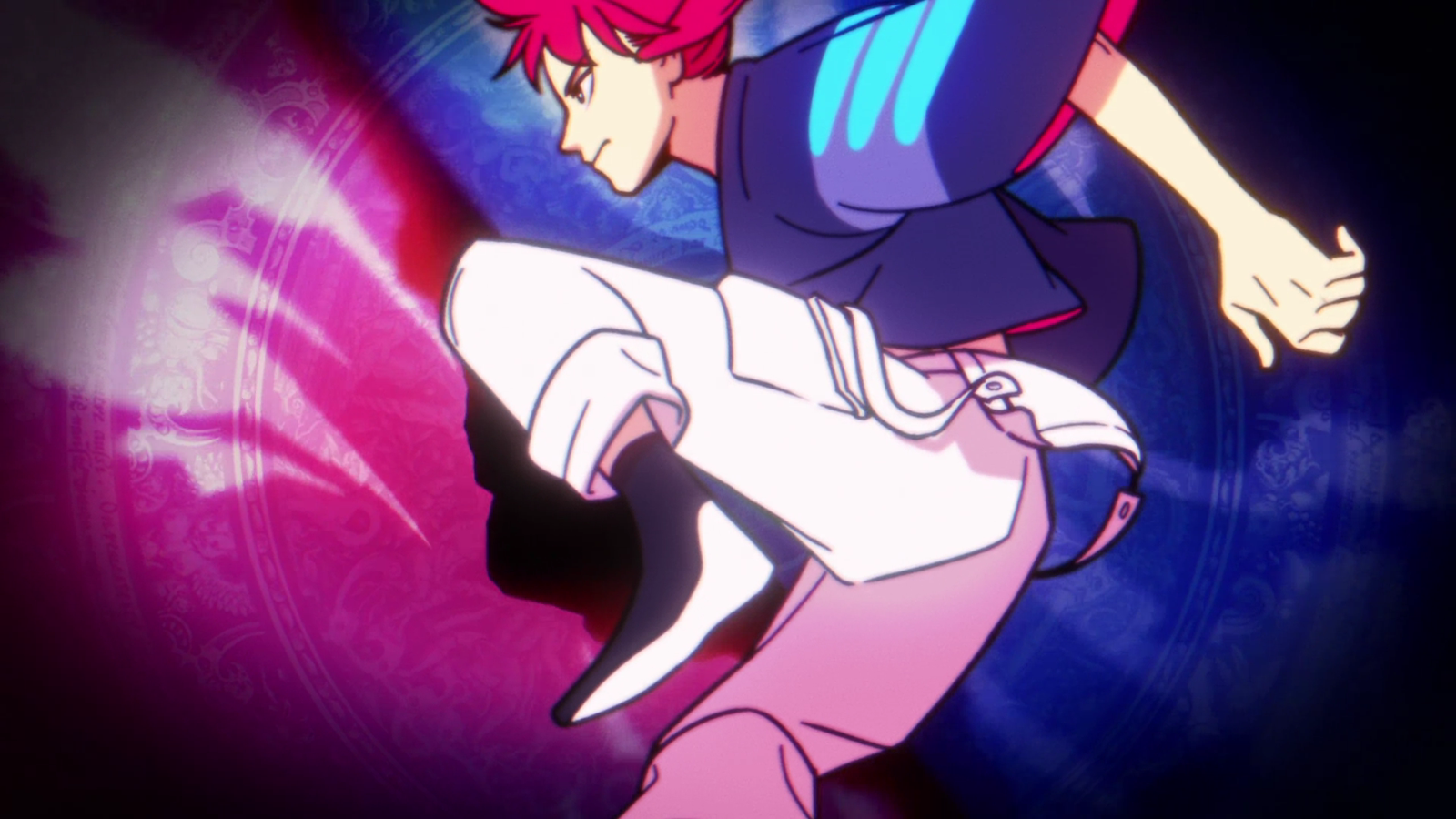You can trust VideoGamer. Our team of gaming experts spend hours testing and reviewing the latest games, to ensure you're reading the most comprehensive guide possible. Rest assured, all imagery and advice is unique and original. Check out how we test and review games here
Chaos Theory – any self respecting Splinter Cell fan will tell you – is the best entry in Tom Clancy’s stealth action series. With new moves, rag doll physics and some of the best visuals to grace the Xbox up until that point, it’s fair to say that Sam Fisher hit his stride with number three. Of the original trilogy, then, this was the perfect candidate for a three-dimensional port.
I have a tendency to rely on the phrase ‘spruced up’ to describe a remake of an old game, but using it here would be all kinds of wrong. Ignore the three-dees and you’re left with something that is significantly less pleasing on the eye than the original; a game that was first released over six years ago.
It pains me grumble about graphics this early on in my appraisal, but many people will be expecting more out of their shiny new 3DS, especially if – like me – it’s the first full game you’ve played on the system. Character models lack detail and the impressive lighting that made the original such a looker is nowhere to be seen. True, Fisher pops out the screen nicely and there’s a good sense of depth to each environment, but the novelty of this wears off about the same time the dull ache behind the eyes starts to kick in.
Your peepers are probably less feeble than mine, but anybody suffering similar problems can remedy the problem with the 3D slider. What can’t be fixed is the control scheme, which is all over the shop. Movement is mapped to the C-pad, camera control resides on the A, B, X and Y buttons, with your trigger and non-lethal attack buttons resting on R and L respectively. Not perfect, but it’s a system we’ve seen before. Splinter Cell is an intricate game, though, and Fisher’s impressive range of moves have been dotted haphazardly about the console. Putting jump on the d-pad beneath the analogue stick is certainly frustrating, but the game’s reliance on the touch-screen is what bothers me the most.
Most of the technical moves at Fisher’s disposal are depicted as icons on the bottom screen, executed with a well-placed finger prod. Activating thermal vision, changing weapons and opening doors are all achieved through this method. I found tapping the ‘interaction’ icon to interrogate an unassuming enemy to be the worst offender, as it just doesn’t seem natural as you’re quietly sneaking through the shadows. Sure, you do get used to it over time, but that doesn’t mean the control scheme isn’t deeply flawed.
I’ve whined incessantly, but it’s only because I have so much love for the original. What I said at the start of this review holds true: Chaos Theory was a fantastic game in its day. Returning to the theme of information warfare that defined the original Splinter Cell, Third Echelon’s most trusted agent is sent into East Asia to recover an abducted computer programmer. The plot that unfolds around this mission quickly escalates, putting Fisher in the middle of a situation with terrifying ramifications (World War 3, of course).
The boat infiltration and faked bank robbery were both memorable missions back in 2005, and despite the control issues it’s clear to see why. Fisher’s impressive range of moves and gadgets offer numerous strategies for success, with options for stealth, action or a happy blend of the two. Most levels work on a three-stage alarm system. If you fail to notice that infra-red beam or security camera, an alarm will ring through the air and nearby enemies will flock to your location. A light gauge at the top of the screen shows how well hidden you are, encouraging you to take out sources of light and stick to the shadows. If you’re good enough, you won’t have to rely on your guns, but Fisher carries a silenced pistol and a SC-20K just in case.
What’s also nice is the addition of fancy text-based objectives integrated in the game world, which have been brought over from Splinter Cell: Conviction. There are other additions since the original, too. Hacking computer terminals has also evolved from matching binary codes to solving interactive 3D puzzles. As well as the thermal goggles, Fisher also has Fusion goggles at his disposal, as well as an OCP electronic disabling device, wall mines, and several add-ons to SC-20K rifle.
Perhaps the best thing about the game (other than the fingerprint scanner that replaces the usual ‘press start’ on the main menu) is the Optical Cable, which can be slid under doors to scout the next area for enemies. In order to manipulate the view from this gadget, you need to tilt the 3DS in the corresponding direction. While most doors can be walked through without too much fuss, I found myself using the gadget anyway just to make use of the tilt sensor. Despite my overall apathy towards the game, it’s commendable that Ubisoft has spent the time updating the product with these technologically relevant features.
Sadly, this isn’t enough to save the game from mediocrity. Splinter Cell 3D’s biggest shortcoming is that it’s simply not a game suited to a handheld console. Ultimately it’s an awkward game to play. Grin and bear its problems and the nine-mission campaign is still a good one, but playing Chaos Theory on this handheld is considerably less enjoyable than it should be.
Splinter Cell: Chaos Theory
- Platform(s): GameCube, Nintendo 3DS, Nintendo DS, PC, PlayStation 2, Xbox
- Genre(s): Action, Stealth

/https://oimg.videogamer.com/images/6237/splinter_cell_chaos_theory_4-84418.jpg)






